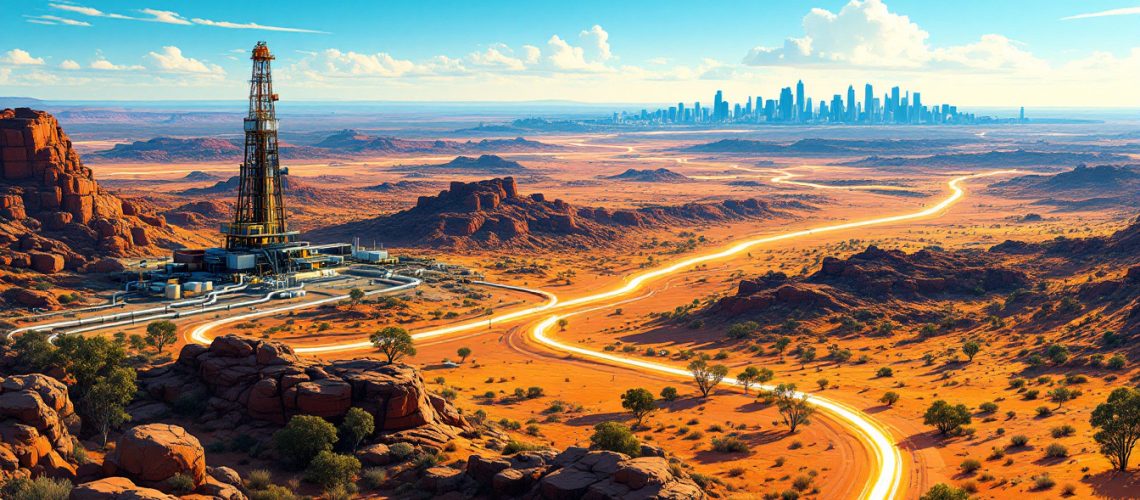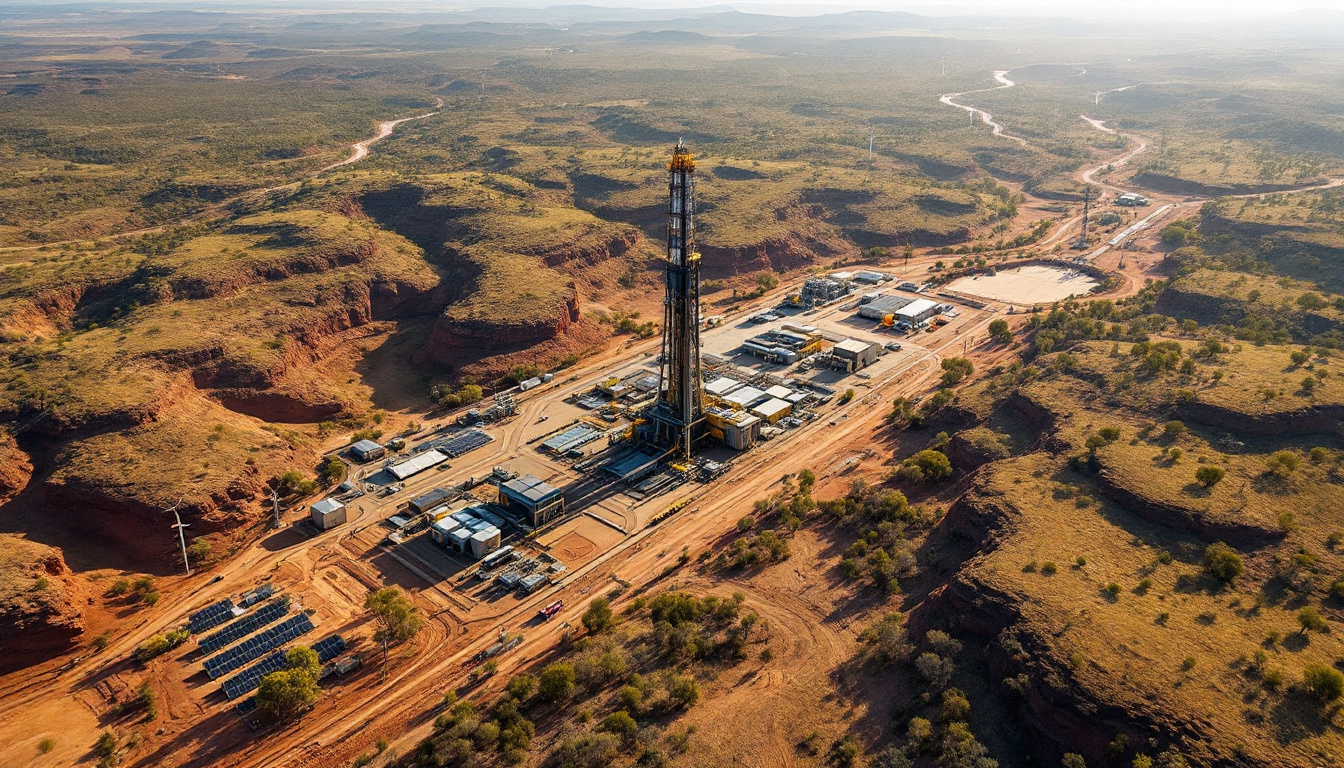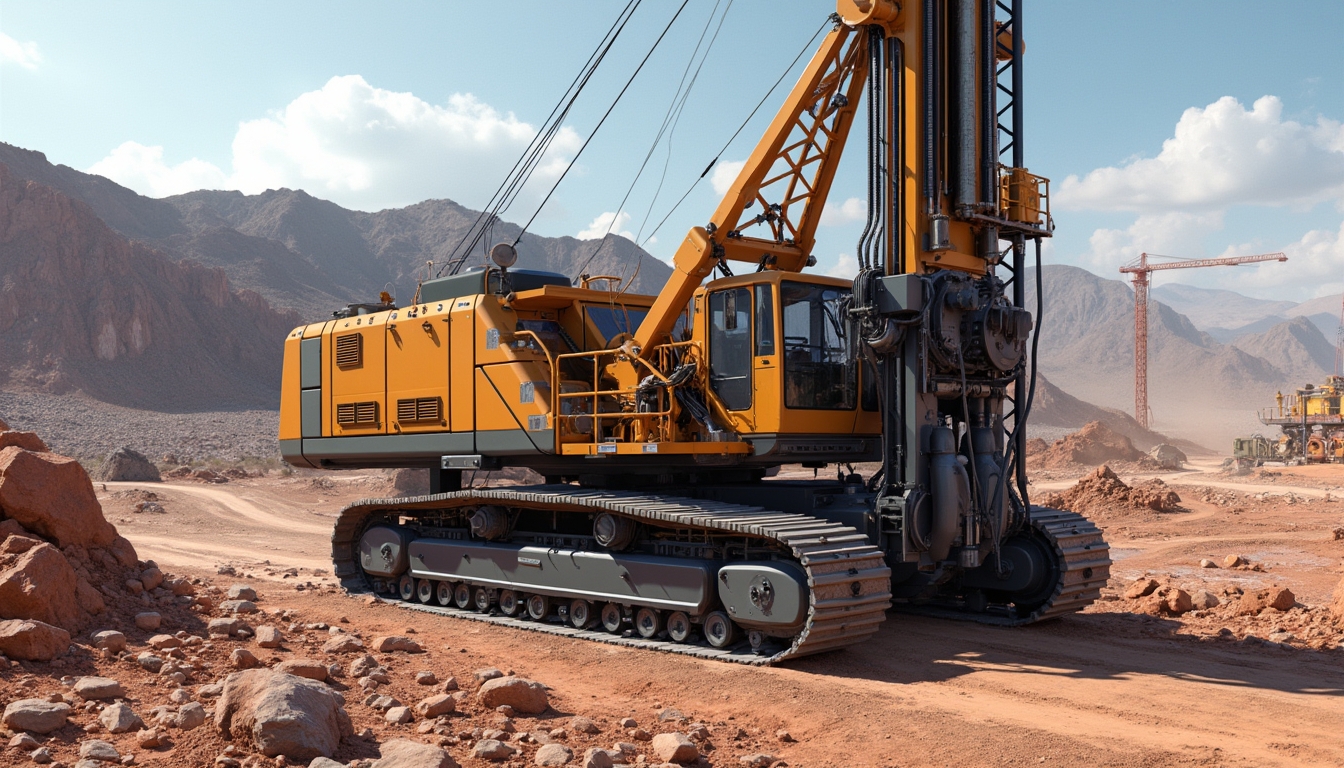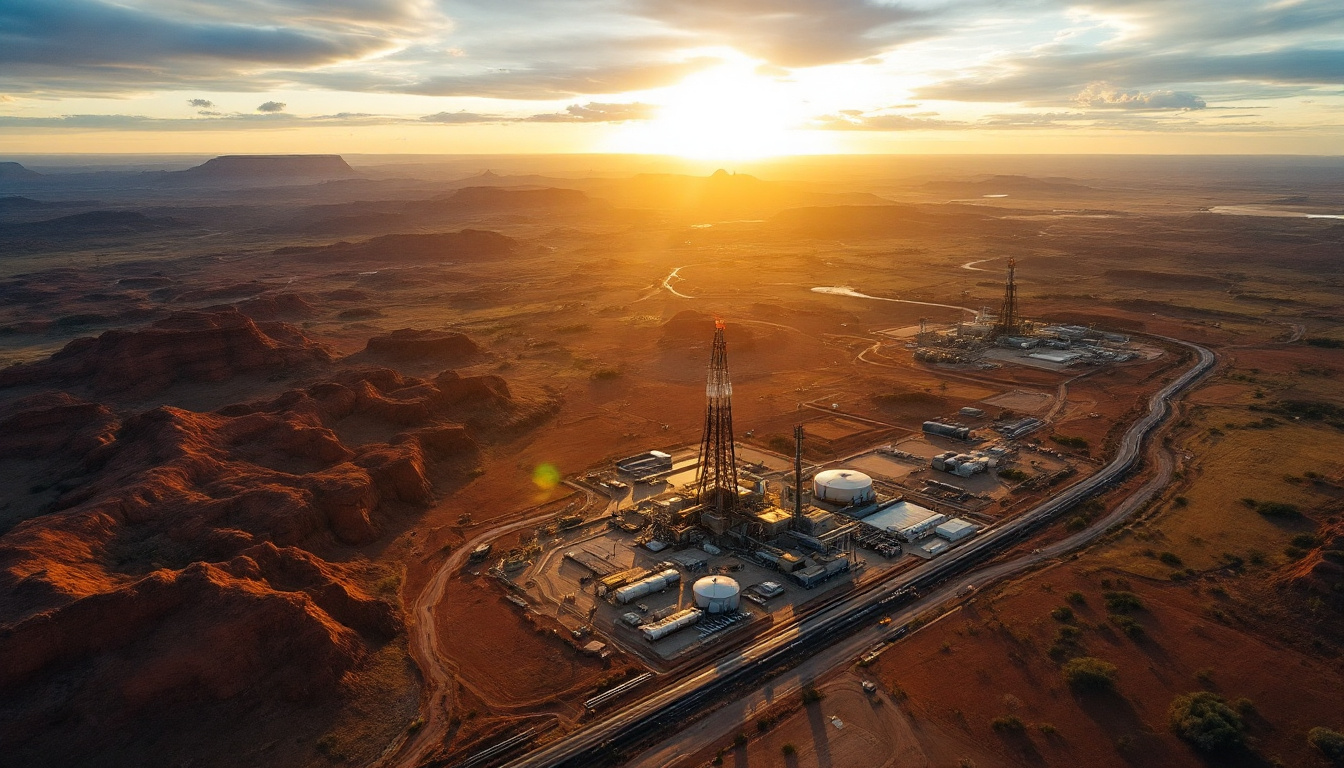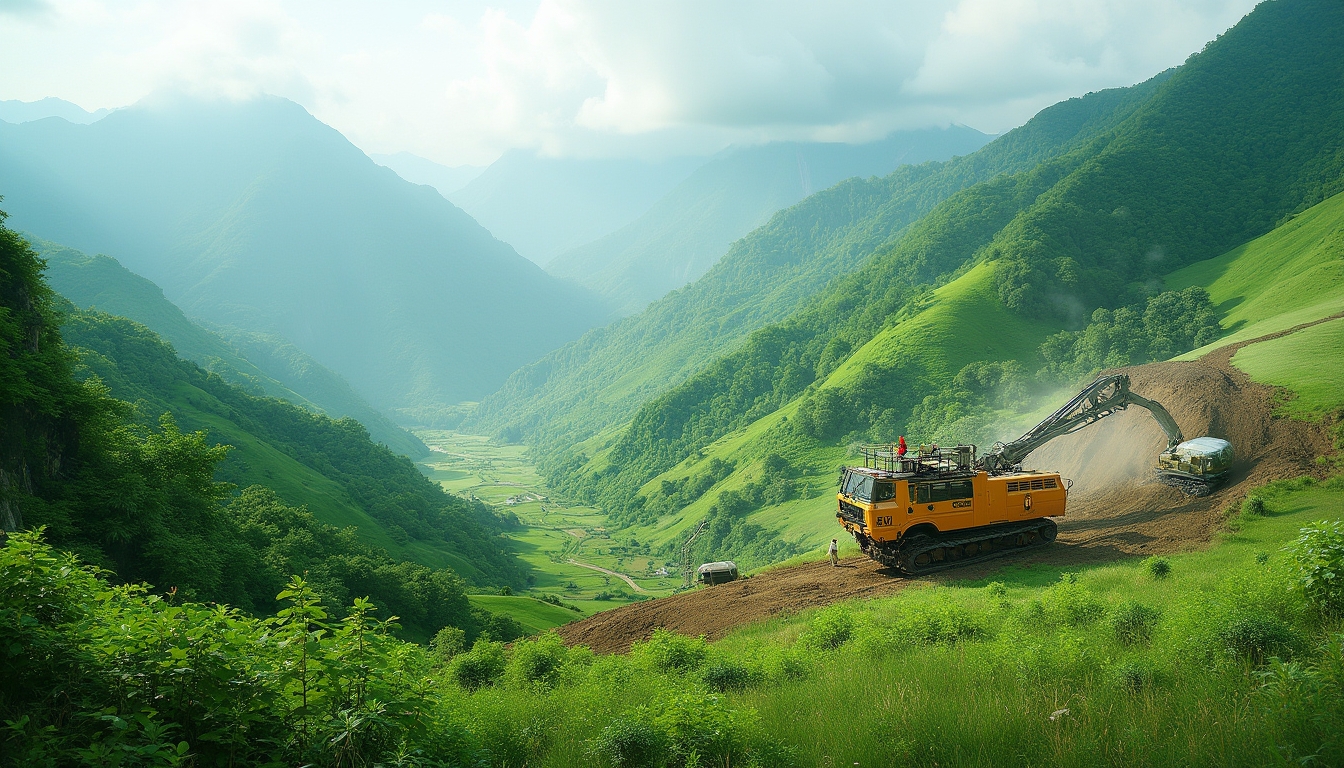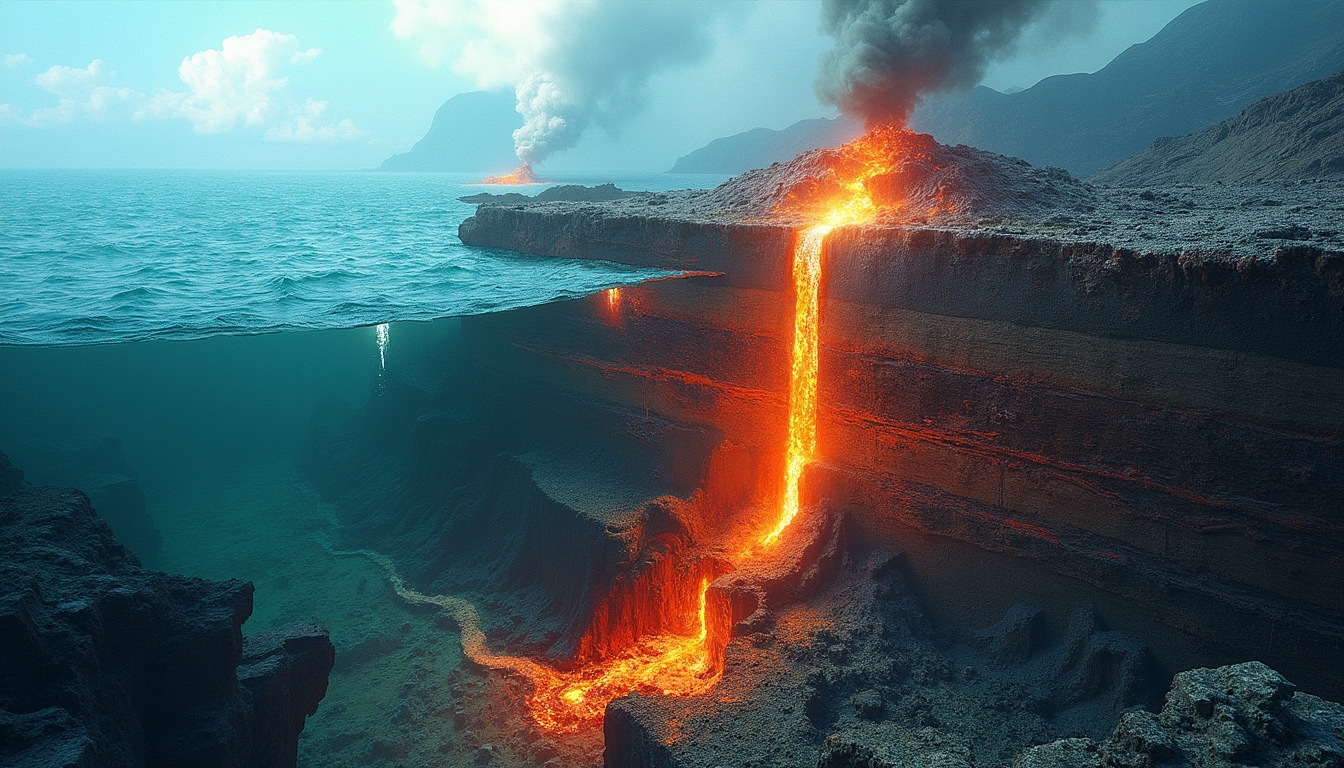John's Group Limited
ASX Code: JHN
Market Cap: A$61.0M
Shares on Issue (SOI): 59.48M
Cash: A$6.1M (as of 30 September 2024)
Enterprise Value (EV): A$119.68M
Jericho Energy Ventures (ASX: JHN) is positioning itself as a significant player in Australia's energy sector, particularly with its ambitious Grandis Gas Project. With a market capitalisation of A$61.0 million and a robust cash position of A$6.1 million as of 30 September 2024, the company is well-resourced to advance its strategic initiatives. The enterprise value of A$119.68 million reflects the market's confidence in JHN's assets and future prospects.
Why is the Grandis Gas Project a Strategic Asset for Jericho Energy Ventures?
Located within the high-potential ATP 2044 and ATP 2077 blocks, the Grandis Gas Project highlights significant resource growth potential in the Taroom Trough of Queensland. A 2025 resource evaluation by independent auditor ERCE confirmed an impressive 17% increase in total 2C recoverable gas resources, reflecting sustained advancements in tapping Queensland’s unconventional reservoirs.
Key developments for the Grandis Gas Project include:
- Maiden Certification of Deep Dry Coal Resources: A certification of 245 billion cubic feet (BCF) of 2C recoverable contingent resources from deep dry coals in the Kianga Formation and Back Creek Group. This certification underscores the project's pioneering role in exploring and developing deep coal gas resources in the region.
- Substantial Gas In Place Estimate: A total estimate of 31,710 BCF of 2C gas in place (GIP) demonstrates enormous resource potential, positioning the project within a new realm of economic significance. This vast reserve highlights the scalability and longevity of the project.
- Significant Increase in Recoverable Resources: The project’s total recoverable 2C gas resources now amount to 1,715 BCF, underlining a notable uplift in asset value. This 17% increase from previous estimates reflects successful exploration and appraisal activities.
What Sets the Recent Resource Certification Apart?
The classification of deep dry coal gas as contingent resources by ERCE represents a vital milestone for the Grandis Gas Project, distilling key achievements that differentiate it within unconventional resource plays.
- First Certified Deep Coal Resource in the Region: Gas from deep dry coals within ATP 2044 and ATP 2077 has now been recognised as a 2C contingent resource for the first time. This marks the Grandis Gas Project as a pioneering entity within the Taroom Trough, opening up new horizons for resource development in the area.
- Successful Production Testing: Production testing from the Daydream-2 well validated substantial gas content at depths of 3,698m to 3,786m. It represents the first successful stimulation and production of coal gas at these depths in the region, showcasing the technical feasibility of extracting gas from deep coal seams.
- Increased Confidence in Technical Viability: With ERCE's independent analysis supported by robust seismic, well logging, and test data, significant clarity has been established around the project’s technical and future economic viability. This enhanced understanding reduces technical risks and strengthens the project’s trajectory toward production scalability.
These developments represent critical progress, positioning the Grandis Gas Project as a frontrunner in deep coal gas exploration and production.
Why it matters to investors: The recognition of contingent resources from deep dry coal places the Grandis Gas Project on the map as a scalable and potentially impactful resource development opportunity. This is particularly appealing to those focused on emerging gas supply capabilities in Queensland’s market, where demand for natural gas continues to rise.
How Does the Grandis Gas Project Compare Economically?
The interplay of economic economics and geological characteristics unites to present Grandis as a competitive resource development opportunity.
- High-Purity Gas Composition: The gas produced consists of over 93% methane with less than 1% carbon dioxide. This purity reduces potential processing and transportation costs, providing a key advantage over developments with high impurity levels. Cleaner gas not only minimises environmental impact but also enhances marketability.
- Efficient Scalability: The deep dry coals are viewed as an "add-on" to tight sand gas reserves, requiring minimal additional drilling or infrastructure. Development will utilise a combination of commercially viable vertical, deviated, and horizontal stimulation approaches, maximising resource extraction with cost-effective methods. This strategy leverages existing assets to expand production without proportionate increases in capital expenditure.
- Proximity to Infrastructure: Located near Queensland's existing gas pipeline network, Grandis is well-positioned to enter both industrial and commercial markets with reduced transport expenditure. Its strategic location enhances its economic viability and potential for rapid market entry.
Taken together, these factors position the project to deliver returns competitive within the industry once concrete development paths are implemented. The synergy of economic advantages and substantial resources makes Grandis a compelling prospect in the Australian energy sector.
Geological Context: What’s Unique About the Deep Dry Coals?
The Grandis Gas Project capitalises on the untapped resource potential within the Kianga Formation and Back Creek Group. These formations are notable for their unique geological and production potential.
- Vast Gas Reserves: The estimate of 31,710 BCF of 2C GIP represents a 120% increase compared to prior evaluations. This demonstrates substantial resource upside, contributing to the potential scalability of the project. The magnitude of the gas in place positions Grandis as one of the significant gas discoveries in recent times.
- Depth and Saturation: Extending more than 3.7 kilometres below ground level, the deep dry coal formations not only expand the boundaries of known reserves but also highlight unique gas saturation levels unseen in conventional sandstone reservoirs. The high-pressure and temperature conditions at these depths contribute to exceptional gas content and flow characteristics.
- Distinct Gas Characteristics: Gas produced from the formation exhibits a unique chromatographic profile compared to sandstone-derived resources in the same area, potentially signalling larger untapped potential in future evaluations. This distinctive composition could offer advantages in specific industrial applications.
Investor takeaway: The geological setting serves as a key driver of value for the Grandis Gas Project, representing a foundational opportunity for further project expansion prospects. Understanding the unique geology is crucial for appreciating the project's long-term potential and strategic importance.
Educational Spotlight: What Are Contingent Resources and Why Do They Matter?
Contingent resources are quantities of hydrocarbons estimated to be recoverable from known accumulations but which currently lack commercial viability due to economic or technical factors.
Why are contingent resources significant?
- Indication of Potential: They signify the presence of identified, high-potential hydrocarbon resources that companies may extract in the future if economic and technical conditions allow. This potential can significantly influence a company's valuation and attractiveness to investors.
- Technical Advancements: Resource certifications demonstrate technical advancements by the company and support investor confidence in clear forward development pathways. They show that the company has effectively de-risked certain aspects of the project.
- Strategic Planning: Recognising contingent resources allows companies to plan strategically for the future, ensuring that they are prepared to capitalise on opportunities as they arise.
For Grandis, the classification of 245 BCF of 2C recoverable resources solidifies the technical viability of deep dry coal gas. Future commercial and regulatory considerations will define eventual returns, but the foundation is firmly established.
What’s Next? Jericho Energy Ventures’ Forward Plans
Upcoming plans for the Grandis Gas Project indicate a committed approach to transitioning resources into production phases. Key focus points include:
- Pilot Testing by 2026: Drawing from learnings and successes at the Daydream-2 well, pilot production facilities are being designed for deeper resource recovery. This will involve testing different extraction techniques to optimise production efficiency.
- Enhanced Resource Certification: Future delineation and exploration wells are planned to improve resource definition, working towards transitioning from 2C to 3C classifications. This will help increase confidence levels in resource estimates and attract potential partners or investors.
- Regulatory Collaboration: Continued engagement with Queensland’s regulatory authorities ensures compliance with state environmental standards while advancing the project's development. Proactive communication and adherence to regulations are essential for timely project progression.
- Market Integration: Discussions with pipeline operators explore seamless integration of Grandis gas into Queensland’s domestic distribution network. Establishing infrastructure agreements early on will facilitate smooth market entry upon commencement of production.
- Timeline of Upcoming Phases:
- H1 2025: Exploration refinement efforts, including seismic surveys and drilling of additional wells.
- 2026: Pilot production testing to evaluate the commercial viability of extraction methods.
- Late 2025 – 2027: Feasibility studies and project optimisation, laying the groundwork for full-scale production.
Investment Thesis: Why Follow Jericho Energy Ventures?
- Robust Resource Growth: The resource update highlights a considerable 17% increase in recoverable 2C gas to 1,715 BCF, reinforcing long-term value prospects. This growth reflects successful exploration strategies and effective resource management.
- Strategic Asset Control: Its 100% interest in ATP 2044 and ATP 2077 ensures operational flexibility and strategic planning autonomy. Full ownership allows the company to make swift decisions and adapt to market conditions without external constraints.
- Technical Credentials: The timely completion of resource certifications legitimises both current operational capabilities and the project's feasibility for scaling up. It also enhances the company's credibility in the eyes of investors and industry partners.
- Proven Production Success: Gas flows in Daydream-2 validate the practicality of extracting hydrocarbons from deep coal formations. This success reduces technical risk and supports confidence in future production potential.
- Environmental Suitability: The project’s low-CO₂ output aligns with broader market and industrial preferences for cleaner energy sources. As the world moves towards lower emissions, such projects become increasingly valuable.
The Grandis Gas Project reflects an intersection of untapped resource potential, economic feasibility, and market readiness, positioning itself as a noteworthy opportunity within Australia’s energy landscape. Investors seeking exposure to innovative energy developments with significant upside potential may find Jericho Energy Ventures an attractive proposition.
Ready to Unlock High-Potential Gas Resources?
Discover game-changing investment opportunities in Australia's energy sector with Discovery Alert's real-time notifications, providing AI-powered insights into emerging projects like Jericho Energy Ventures' Grandis Gas Project. Start your 30-day free trial today and gain access to sophisticated analysis that simplifies complex resource developments and helps you stay ahead of market-moving discoveries.
